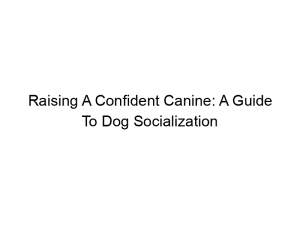Have you ever watched your dog chase its tail, seemingly endlessly? This common canine behavior, often comical, can actually reveal a lot about your pet’s physical and mental state. Why do dogs chase their tails? This comprehensive guide delves into the various reasons behind this behavior, from simple playfulness to underlying medical conditions. We’ll explore the different scenarios, helping you understand why your furry friend engages in this quirky activity and what you can do if it becomes excessive or concerning. You’ll learn about potential causes, when to seek veterinary attention, and how to address tail chasing behavior effectively. Let’s unravel the mystery behind this fascinating canine habit.
Tail chasing, also known as tail biting or self-chaising, is a behavior where dogs pursue and attempt to catch their own tails. It can range from
a brief, playful episode to an obsessive, repetitive action. The intensity and frequency vary greatly between dogs and breeds.
Why Does It Matter?
Understanding the reasons behind tail chasing is crucial for the well-being of your dog. While often harmless, excessive or persistent tail chasing can lead to injuries, skin irritations, and even psychological distress. Identifying the underlying cause allows for appropriate intervention and prevents further complications.
The Different Reasons for Tail Chasing
Playfulness and Excitement
Many puppies and young dogs chase their tails simply out of exuberance and youthful energy. It’s a form of play, similar to chasing other objects or toys. This is usually normal behavior and doesn’t require intervention unless it becomes excessive.
Boredom and Lack of Stimulation
A dog that is bored or lacks sufficient mental and physical stimulation might resort to tail chasing to alleviate its restlessness. This is especially common in dogs who spend extended periods alone or without adequate exercise.
Stress and Anxiety
Dogs suffering from stress, anxiety, or other emotional disturbances might chase their tails as a coping mechanism. Underlying anxieties, separation anxiety, or fear can manifest in this repetitive behavior.
Underlying Medical Conditions
Several medical conditions can cause a dog to chase its tail. Skin irritations, parasites like fleas or ticks, allergies, or pain can cause discomfort near the tail, leading the dog to lick, bite, or chase its tail for relief.
Neurological Disorders
In some cases, neurological issues or disorders can trigger compulsive tail chasing. This is often accompanied by other unusual behaviors and requires veterinary attention.
Pain or Discomfort
Pain originating from the tail itself, such as an injury or inflammation, can trigger tail chasing as the dog attempts to alleviate discomfort. This should always be investigated by a veterinarian.
Genetic Predisposition
Certain breeds might be more prone to tail chasing due to genetic factors. While not definitively proven for all breeds, certain tendencies might exist within specific lineages.
Learned Behavior
Dogs can learn tail chasing through positive reinforcement, even accidentally. If the act of chasing the tail brings momentary relief or attention, the behavior can be repeated and reinforced.
How to Identify the Cause
Observational Analysis
Carefully observe your dog’s behavior during and before tail-chasing episodes. Note the context, surrounding stimuli, and any potential triggers. Is it happening after playtime, when left alone, or at specific times of day?
Veterinary Examination
If the tail chasing is excessive, persistent, or accompanied by other symptoms like scratching, whining, or limping, consult a veterinarian. A thorough examination can rule out underlying medical conditions.
Behavioral Assessment
A veterinary behaviorist can assess your dog’s behavior and identify potential underlying psychological or emotional factors contributing to the tail chasing.
Strategies to Manage Tail Chasing
Environmental Enrichment
Providing adequate physical and mental stimulation can significantly reduce boredom-related tail chasing. This includes regular exercise, interactive play, puzzle toys, and training sessions.
Managing Stress and Anxiety
If stress or anxiety is suspected, address the underlying causes. This might involve creating a calming environment, reducing stressful stimuli, providing comfort items, and considering calming aids or pheromone diffusers.
Addressing Medical Issues
If a medical condition is identified, appropriate veterinary treatment will be necessary to address the underlying problem and reduce tail chasing.
Behavioral Modification
Positive reinforcement training can be effective in redirecting the behavior. Reward your dog for engaging in alternative, desirable behaviors and ignore or gently distract them during tail-chasing episodes.
Medication
In some cases, medication prescribed by a veterinarian might be necessary to manage severe compulsive behavior or underlying anxiety.
When to Seek Professional Help
Persistent or Excessive Tail Chasing
If the tail chasing is frequent, intense, or causing injury, veterinary attention is crucial. This could indicate an underlying medical problem or compulsive disorder.
Injuries from Tail Chasing
Any visible injuries, wounds, or skin irritations resulting from tail chasing require immediate veterinary treatment to prevent infection or further damage.
Frequently Asked Questions
What are the most common causes of tail chasing in dogs?
The most common causes include playfulness, boredom, stress, anxiety, and underlying medical conditions like skin allergies or parasites. Less frequent causes include neurological disorders.
How can I tell if my dog’s tail chasing is just play or something more serious?
Playful tail chasing is usually brief, intermittent, and not accompanied by other symptoms. Serious tail chasing is often persistent, intense, and might involve self-injury, skin irritation, or other behavioral changes.
My dog is chasing its tail excessively. What should I do?
First, consult a veterinarian to rule out any medical causes. If no medical issues are found, address potential boredom, stress, or anxiety through environmental enrichment, training, and potentially behavioral modification techniques.
Can tail chasing lead to injuries?
Yes, excessive tail chasing can lead to injuries like wounds, abrasions, or even broken tails. The dog might bite or scratch its tail repeatedly, causing pain and infection.
Are there specific breeds more prone to tail chasing?
While no breed is exclusively prone, some anecdotal evidence suggests certain breeds might exhibit a slightly higher incidence of tail chasing, possibly due to genetic factors or breed-specific traits.
How can I prevent my dog from chasing its tail?
Prevention involves providing sufficient exercise, mental stimulation, and a stress-free environment. Early intervention, particularly for puppies, can prevent the behavior from becoming ingrained.
What are some calming aids for anxious dogs prone to tail chasing?
Calming aids like pheromone diffusers, calming treats, or even classical music can help create a more relaxed atmosphere and reduce anxiety-related tail chasing.
Final Thoughts
Understanding why your dog chases its tail is crucial for ensuring its well-being. From innocent play to serious medical concerns, the causes are diverse. By carefully observing your dog’s behavior, consulting with a veterinarian when necessary, and implementing appropriate strategies, you can address tail chasing effectively and maintain your dog’s happiness and health. If you suspect underlying anxiety or stress, seeking professional help from a certified veterinary behaviorist is highly recommended. Remember, a happy, healthy dog is a well-stimulated and well-cared-for dog. By understanding the nuances of tail-chasing behavior, you can become a better advocate for your furry friend and ensure a long and fulfilling life together.




